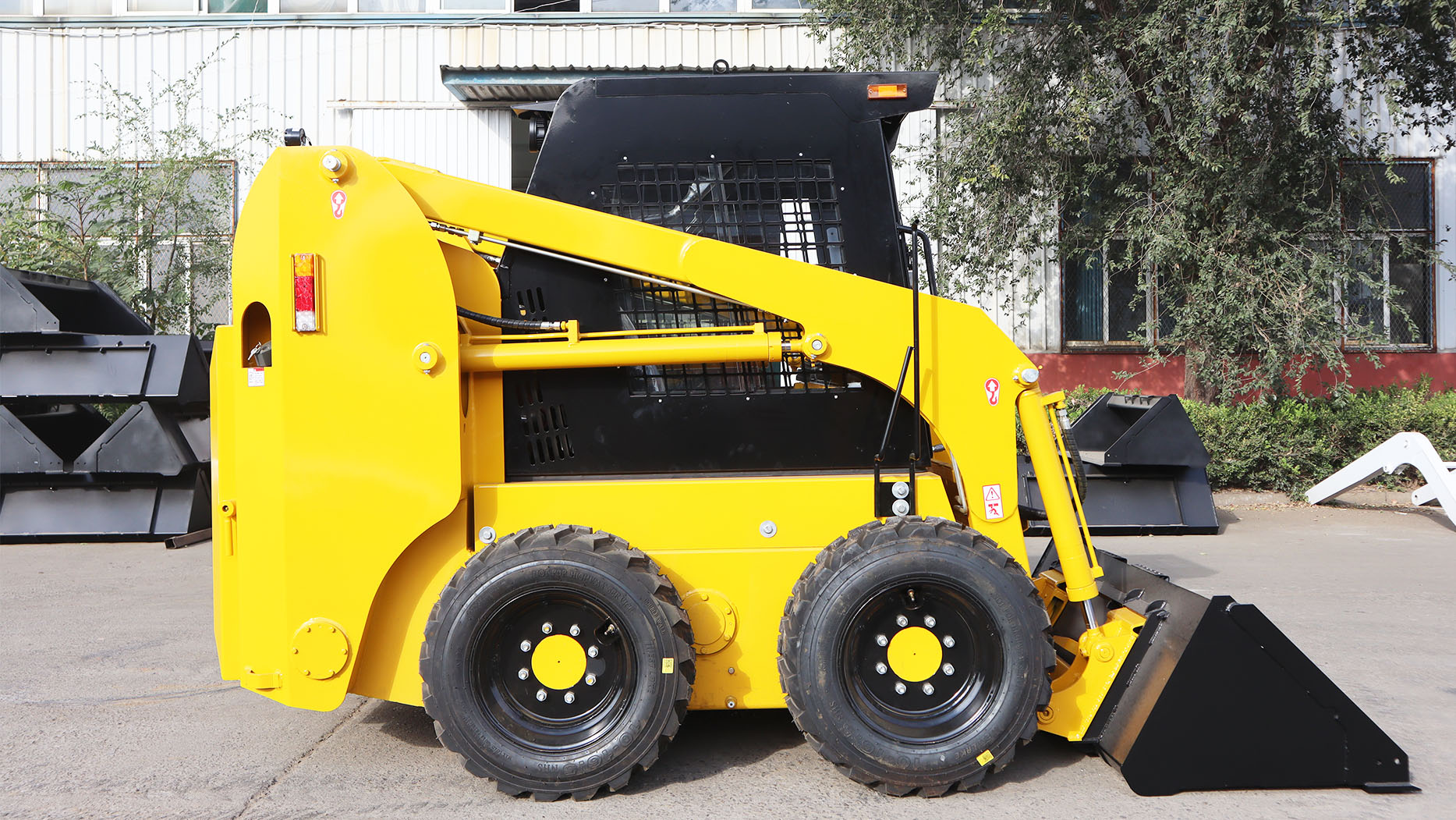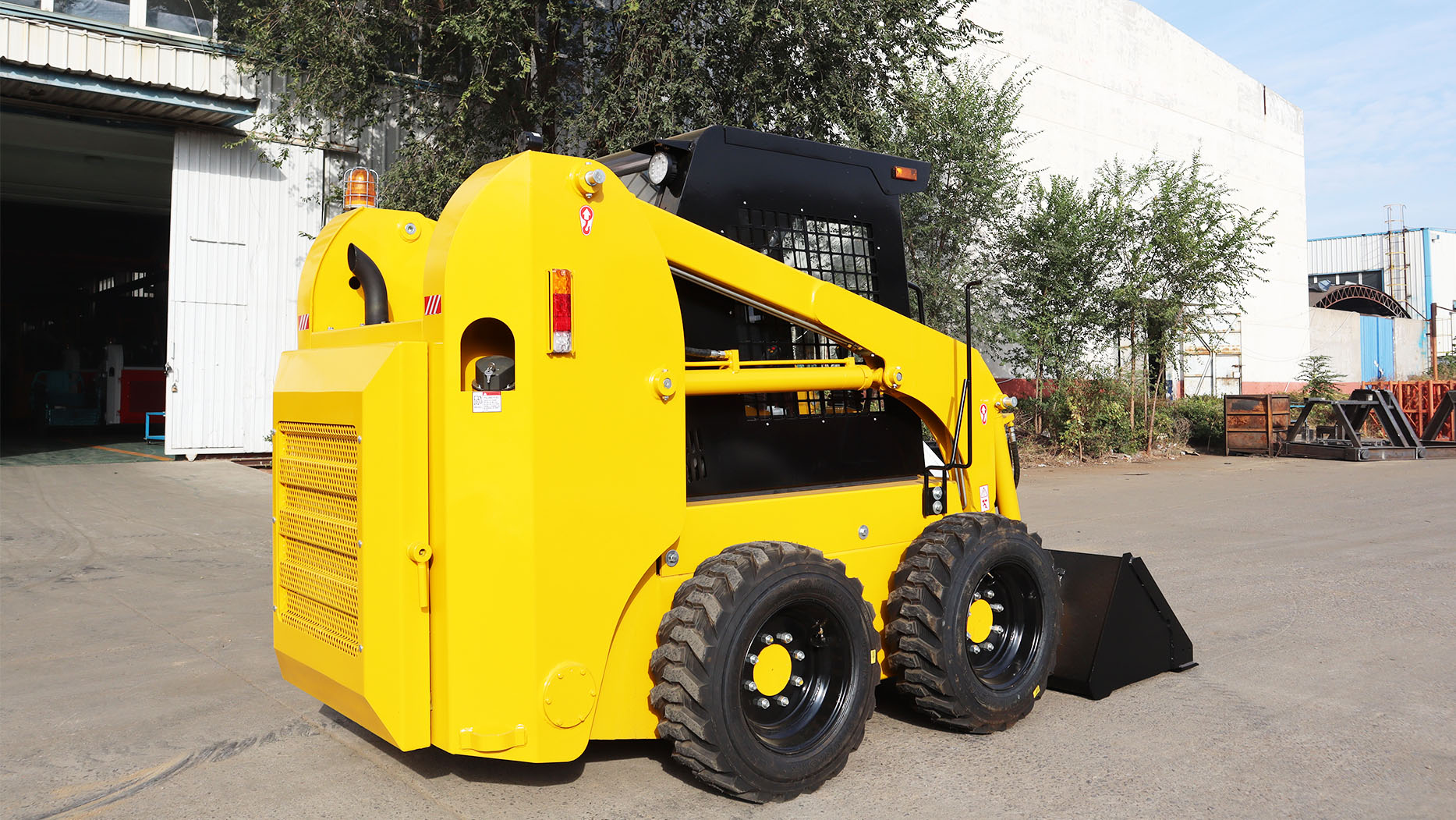I. Introduction
A skid steer loader is a versatile, compact, and powerful piece of machinery that is widely used in construction, landscaping, agriculture, and other industries. This machine is designed for tight spaces and can perform a wide range of tasks with the help of various attachments. Skid steers are particularly known for their ability to turn in place, thanks to their unique "skid-steering" system, making them ideal for jobs where space is limited, such as small construction sites, farms, or landscaping projects.
In this article, we will dive into the world of skid steer loaders, exploring their features, different types, common uses, and much more. Whether you’re a contractor, farmer, or enthusiast, this guide will help you understand why skid steer loaders are one of the most versatile machines in heavy equipment.
II. What is a Skid Steer Loader?
A skid steer loader is a small, rigid-frame machine equipped with lift arms to which various attachments can be mounted. Its unique "skid-steering" mechanism, where one set of wheels or tracks is locked and the other set is powered to create turning motion, gives it exceptional maneuverability, especially in tight spaces. Unlike other vehicles that steer using a traditional steering wheel, a skid steer uses independent wheel control to turn quickly and efficiently.
The skid steer’s compact design and versatility make it ideal for a wide range of tasks, including digging, grading, material handling, and even snow removal. It can work in confined areas where larger machines simply cannot fit, making it an essential tool in many industries.
III. History and Evolution of Skid Steer Loaders
The skid steer loader was first developed in the late 1950s by the Keller brothers who were looking to build a machine that could help them clean manure from their turkey farm. Their design eventually evolved into the skid steer loader we know today. It was further refined in the early 1960s when the first commercially successful skid steer was built, thanks to the work of the Melroe Manufacturing Company (now Bobcat).
Over the years, skid steer loaders have evolved to become more powerful, efficient, and versatile. Modern models now feature enhanced engines, better hydraulics, and a wide variety of attachments that make them capable of handling everything from construction projects to snow removal and even forestry work.
IV. Types of Skid Steer Loaders
Skid steer loaders come in various sizes and configurations to meet different needs. Here are the most common types:
Wheeled Skid Steer Loaders: These are the most common and are designed for use on solid, hard surfaces like concrete or asphalt. They are ideal for projects that involve smooth terrain and provide better speed and fuel efficiency.
Tracked Skid Steer Loaders: These models use rubber tracks instead of wheels, providing better traction on softer or uneven surfaces, such as dirt, mud, or snow. Tracked skid steers are commonly used in landscaping, construction, and agriculture where conditions are rough.
Mini Skid Steer Loaders: These compact models are smaller and more lightweight, making them ideal for tight spaces and smaller-scale tasks like landscaping or small-scale construction work.
V. Key Components and Mechanics of a Skid Steer Loader
Understanding the key components of a skid steer loader helps you appreciate its efficiency and versatility:
Engine: Most skid steer loaders are powered by diesel engines, providing the necessary power for heavy lifting and digging. The engine's power is directly linked to the machine’s overall performance.
Hydraulic System: The hydraulic system is vital for lifting, digging, and powering various attachments. The system ensures the smooth operation of the lift arms and allows for precise control.
Lift Arms and Attachments: Skid steers feature strong lift arms that can be fitted with various attachments, such as buckets, forks, augers, and sweepers. These attachments enhance the machine’s capabilities, allowing it to perform multiple tasks.
Steering System: The skid steer’s unique steering system allows it to pivot within its own length by skidding one set of wheels or tracks while the others remain stationary. This feature makes it extremely maneuverable in tight spots.
VI. Advantages of Using a Skid Steer Loader
Skid steer loaders offer several benefits that make them a popular choice for many industries:
Maneuverability: Their compact size and turning ability make them ideal for jobs in tight, congested areas where larger machines would be too bulky.
Versatility: With the ability to swap out attachments, skid steers can perform numerous tasks, including digging, lifting, material handling, snow removal, and more.
Efficiency: Skid steers are powerful machines that can quickly complete tasks like grading or digging. Their ability to operate on a variety of terrains adds to their efficiency.
Cost-Effective: While skid steers can be expensive to buy, renting them for short-term projects is a cost-effective option for businesses and contractors who do not need to own the machine long-term.
VII. Common Uses of Skid Steer Loaders
Skid steers are used across a wide range of industries, including:
Construction: Skid steers are often used for digging, grading, lifting materials, and moving debris on construction sites.
Landscaping: They’re used for tasks such as clearing brush, grading soil, digging trenches, and hauling materials.
Agriculture: Skid steers assist in lifting hay bales, clearing fields, and moving materials in farm operations.
Snow Removal: With the appropriate attachment, skid steers are ideal for clearing snow from driveways, parking lots, and small streets.
Demolition: Skid steers can be used for light demolition, breaking up concrete, and clearing debris.
VIII. Popular Skid Steer Loader Brands
Several well-known brands manufacture high-quality skid steer loaders:
Bobcat: One of the most recognized names in skid steer loaders, known for their durability and wide range of attachments.
Caterpillar (CAT): Offers a variety of skid steer loaders designed for different job sizes and conditions.
John Deere: Known for reliable and powerful skid steers with excellent lift capacities.
Case: Offers both wheeled and tracked skid steer loaders with a reputation for performance.
New Holland: Provides skid steers with superior fuel efficiency and performance features.
IX. Renting vs. Buying a Skid Steer Loader
Whether to rent or buy a skid steer loader depends on the project:
Renting: Renting is ideal for short-term projects or when the machine will not be in constant use. Renting saves money on maintenance, insurance, and storage costs.
Buying: If you plan to use the skid steer regularly for long-term projects, purchasing one may be more cost-effective in the long run.
Consider the duration of your project, your budget, and whether you need the machine for occasional tasks when making your decision.
X. How to Operate a Skid Steer Loader Safely
Operating a skid steer loader requires skill and safety precautions:
Pre-Operational Checks: Always check fluid levels, tires, and attachments before starting the machine.
Operator Training: Ensure the operator is well-trained, as improper use can lead to accidents.
Use Proper Personal Protective Equipment (PPE): Always wear appropriate safety gear, including a helmet, gloves, and reflective clothing.
Avoid Overloading: Never exceed the loader's rated capacity to prevent tipping or mechanical failure.
XI. Maintenance and Care for Skid Steer Loaders
Routine maintenance is essential for keeping a skid steer in top condition:
Engine Care: Regularly change the engine oil and filters to ensure smooth operation.
Hydraulic System: Keep the hydraulic fluid clean and at the proper level to avoid damaging the system.
Tires or Tracks: Regularly inspect the condition of the tires or tracks, and replace them as needed.
Attachment Checks: Ensure attachments are properly connected and in good working order.
XII. Conclusion
The skid steer loader is an essential and versatile piece of machinery for a variety of industries. Its compact size, agility, and range of available attachments make it ideal for performing tasks in tight spaces. Whether you are renting or purchasing a skid steer, understanding its features, operation, and maintenance requirements will help you get the most out of this powerful machine. With its ability to perform multiple tasks, the skid steer loader is a valuable asset for any project.
Post time:Apr.26.2025



